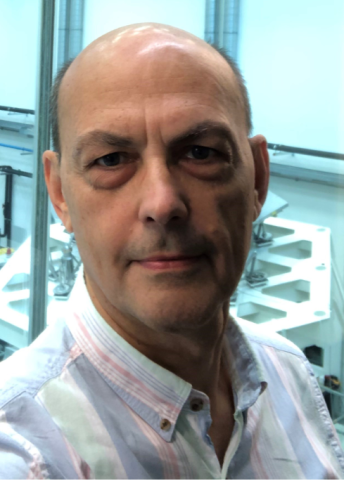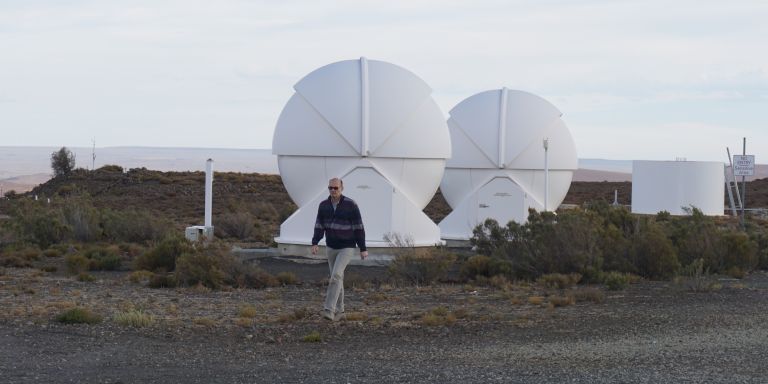
Nikolai Piskunov
Professor of Observational Astrophysics
Wallenberg Scholar
Institution:
Uppsala University
Research field:
Exoplanets


Wallenberg Scholar
Institution:
Uppsala University
Research field:
Exoplanets
A huge gas cloud – with a surface temperature of about 1,000 degrees Celsius.
This is one way of describing planet 51 Pegasi b. Discovered in 1995, it was the first planet found outside our solar system – an exoplanet – that orbits a star resembling the Sun.
The discovery was a milestone in our understanding of space. Progress since then has been rapid. There are now over 4,000 known exoplanets, and we also know that most stars have planets. This brings us to the really Big Question: is there life on any of these planets? Piskunov, who is a professor of observational astrophysics at Uppsala University, is among those trying to find the answer.
“We’re taking small steps towards discovering life elsewhere in the Universe. We’re focusing on planets that resemble Earth – a hard surface with running water. These are the two factors we know to be important for biological processes and the development of primitive life, such as viruses and bacteria,” he says.
High on a mountain in the Chilean desert sits one of the largest telescopes in the world, looking deep into space. The telescope has been fitted with a new measuring instrument, built specifically to explore Earthlike exoplanets. The instrument is called CRIRES+, and is a spectrometer (see fact box). It has been developed under a European joint project led by Piskunov, who is now using it in his research as a Wallenberg Scholar.
“We already knew that Earthlike exoplanets existed, but we weren’t able to ascertain whether or not they had an atmosphere, and what molecules it included. This instrument enables us to do so”.
An atmosphere is a layer of gases that can stabilize the temperature of a planet and protect it from dangerous radiation. The atmosphere may also provide important information in the form of molecules resulting from biological processes, giving evidence for life on the planet.
“We know that molecules like methane, water and ozone are related to life on Earth. If we find these molecules in the atmosphere around another planet, it will increase the chance there’s life there.”
Measurements have to be taken multiple times during the exoplanet’s orbit around its star. For this reason, the project is focusing on planets with a shorter orbital period than our own. In order for a planet with a shorter orbital period to have a similar temperature to that on Earth, it must orbit a smaller and less radiant star than the Sun. The project is therefore concentrating on planetary systems of this kind.
“We have a number of planets to check out. In about two years I think we’ll be able to say which of them have an atmosphere.”
Piskunov is developing models for planets found to have an atmosphere. They will describe the climate on the planets, based on theoretical principles and facts derived from observations.
Another area of Piskunov’s research concerns stars that are reminiscent of the Sun. His aim is to find Earthlike planets orbiting them.
The search for these planets will be made with an automated telescope, equipped with an instrument that registers the radial velocity of a star, i.e. its speed relative to us. This enables the scientists to work out whether any planets orbiting that star.
The instrument is almost finished, and will be fitted to a telescope in the Canary Islands. From there, it will monitor some fifty or so sun-like stars over a ten-year period, without the researchers being much involved.
“The experiment and planning will be carried out using AI to check the weather, for example, to see when conditions are right to observe certain objects but not others.”
The project is headed by Didier Queloz, one of the researchers involved when exoplanets were first discovered in 1995.
Piskunov describes research as his great passion. But it was by no means a given that he would choose astronomy.
He was born and raised in Moscow, Russia. After school, he wanted to study physics, but the queue for signing up for the physics program was long and slow. He paid a visit to the department of physics and astronomy and found he did not have to stand in line because the competition was places was much higher. He applied and was accepted there instead.
“I quickly discovered that I liked astronomy. There’s enough physics in it for me. We observe cosmic objects but describe them using physical models and laws.”
He received his PhD in Estonia. After that he worked as a researcher in Finland, Canada and the U.S. He joined Uppsala University in 1996.
“This grant gives me freedom. I can concentrate my research and recruit young, free-thinking researchers, who contribute innovative ideas for the future research.”
“This (Uppsala) is the best department I’ve worked at. The researchers here work together and care about relations with their colleagues. This helps to create a fantastic research climate, which has in turn boosted our international reputation.”
Piskunov has seen amazing progress in exoplanet research. He believes there is life elsewhere in the Universe, and hope to see the day when we know for sure.
“Hopefully, in five, maybe ten, years’ time we will have made observations proving there is biological activity on an exoplanet. That will be a great day.”
Text Sara Nilsson
Translation Maxwell Arding
Photo Nikolai Piskunov, Garrelt Mellema, Ulf Seeman, Magnus Bergström
The CRIRES+ instrument is fitted to the eight-meter telescope at the European South Observatory in Chile. It began being used for research purposes in early 2021. Knut and Alice Wallenberg Foundation is one of the principal funding sources for the instrument, which is an updated version of an earlier instrument called CRIRES.
CRIRES+ is a spectrometer, which splits light into its component spectra – somewhat like a rainbow – and analyzes them.
The matter present between the light source and the spectrometer – such as molecules in the atmosphere, can affect the light and create spectral lines. These are unique to each element, a fact that enables scientists to use the instrument to determine the substances present in the atmosphere.
CRIRES+ does not measure visible light; it operates on infrared wavelengths, where molecules of interest to researchers have strong spectral lines. CRIRES stands for CRyogenic high-resolution InfraRed Echelle Spectrograph.
The instrument cannot measure light from exoplanets themselves, since that light is drowned out by much brighter light from the star. A comparison is instead made between light from the star alone and light when the planet passes in front of the star. This yields data on the fraction of light from the star that has passed through and been impacted by any atmosphere the exoplanet may have. These data are used to determine the atmosphere of the exoplanet.
The instrument is designed to have an extremely high resolution. This is necessary so the measurements will not be distorted by the fact that the molecules the researchers are looking for are also present in the Earth’s atmosphere.